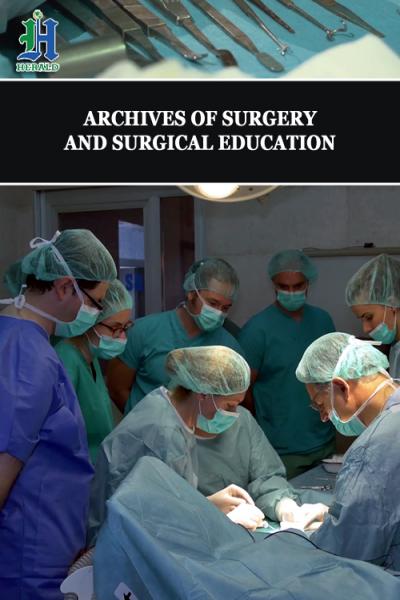
Clinical Vignette: Sleeve Gastrectomy in LVAD patient as Bridge for Cardiac Transplant
*Corresponding Author(s):
Ivan MartinezUniversity Of Miami Miller School Of Medicine, United States
Email:martinezivan0826@gmail.com
Background
Obesity is a disease associated with many life-threatening complications, including end stage cardiac disease. Patients with refractory cardiac failure and class III obesity (Body Mass Index (BMI) > 40 kg/m2) are commonly excluded from consideration of cardiac transplantation which is preferentially reserved for patients with BMI < 30 kg/m2. Several centers across the country utilize bariatric surgery as a means to help lower BMI in patients with class III obesity who require cardiac transplant. It is rarely performed, however, in those already relying on a Left Ventricular Assist Device (LVAD) as a temporizing bridge to transplant.
Case Presentation
We present the case of a 28 year old female with class III obesity (BMI 48) and refractory cardiac failure status post LVAD implantation who required significant weight reduction in order to be considered for future transplant.
Clinical Course
- In 2014 at age 23, the patient was diagnosed with non-ischemic cardiomyopathy of unknown etiology with left ventricular ejection fraction of 15-25%.
- Since her diagnosis she was admitted twice for episodes of acute decompensation.
- An AICD was placed four years following initial diagnosis.
- In part due to her weight, the LVAD was placed as destination therapy. The patient sought consultation at the Bariatric Wellness and Surgical Institute at JFK Medical Center for weight reduction strategies soon after LVAD placement.
- After repeated discussion, her healthcare providers, including heart failure team, and cardiothoracic and bariatric surgeons, felt it safe to proceed with a laparoscopic sleeve gastrectomy to help achieve maximal weight reduction.

Surgery
- Cardiac optimization was achieved prior to surgery.
- Preoperative imaging was carefully studied to avoid contamination and driveline injury to her LVAD intraoperatively.
- Standard bariatric surgery protocols were followed, including perioperative anticoagulation, early ambulation, and a pre- and post-operative bariatric food plan.
- There were no postoperative complications.

Results
- At six months following surgery, the patient achieved >40lb weight loss.
- She continues her efforts with diet and symptom-limiting exercise. She participates in cardiac rehabilitation three days per week to maximize cardiac function.
- She is hopeful that with continued weight loss she will qualify as a candidate for receipt of a new heart, and be added to the transplant list.
Discussion
Laparoscopic sleeve gastrectomy is an effective approach to reduce BMI in order to render obese patients with severe cardiac dysfunction requiring LVAD support eligible for future transplantation [1,3]. While weight loss strategies including dietary, behavioral and surgical intervention as necessary should ideally reduce disease burden before the onset of end-organ damage, we hope to continue providing this service to future patients suffering from both class III obesity and refractory heart failure requiring LVAD as a means of increasing future candidacy for receipt of a new heart [4,5].
References
- Karnik S, Kanekar A (2012) Childhood obesity: a global public health crisis. Int J Prev Med 3: 1-7.
- Hurt RT, Kulisek C, Buchanan LA, McClave SA (2010) The obesity epidemic: challenges, health initiatives, and implications for gastroenterologists. Gastroenterol Hepatol (N Y) 6: 780-792.
- Hruby A, Hu FB (2015) The Epidemiology of Obesity: A Big Picture. Pharmacoeconomics 33: 673-689.
- Clerkin KJ, Naka Y, Mancini DM, Colombo PC, Topkara VK (2016) The Impact of Obesity on Patients Bridged to Transplantation With Continuous-Flow Left Ventricular Assist Devices. JACC Heart Fail 4:761-768.
- Russo MJ, Hong KN, Davies RR, Chen JM, Mancini DM, et al. (2010) The Effect of Body Mass Index on Survival Following Heart Transplantation: Do Outcomes Support Consensus Guidelines? Ann Surg 251: 144-152.
Citation: Soiffer J, Martinez I, Buicko J, Kichler K (2024) Unusual coexistence of congenitally corrected transposition of great arteries with type a interrupted aortic arch. A case report. Archiv Surg S Educ 6: 055.
Copyright: © 2024 Jenny Soiffer, et al. This is an open-access article distributed under the terms of the Creative Commons Attribution License, which permits unrestricted use, distribution, and reproduction in any medium, provided the original author and source are credited.

